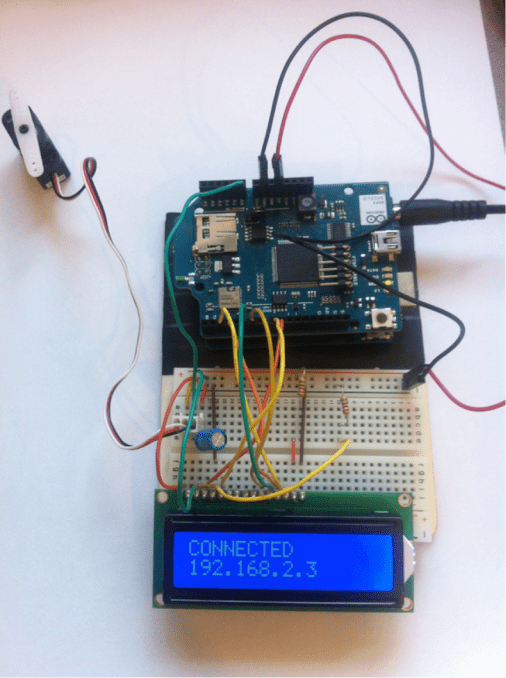As anyone who’s ever had a Greek friend knows, we tend to have different Easters (sometimes) and do different things during them, namely, dye all our eggs red and roast a whole lamb on a spit.
I remember as a young girl in my village in Greece being asked to manually turn the spit of our lamb; I thought it was a great technological feat to have a motorized spit turner introduced to our yearly Pascha ritual — real-life application of the John Henry fable. It was actually probably the first time I considered the true impact of innovation — turning a spit manually may sound awesome and quaint, but you end up smelling like sweaty, chain-smoking livestock for days.
If I thought a motorized spit was the height of lamb-roasting innovation, imagine my surprise when I saw the above video from the Technological Educational Institute of Ionian Islands using Leap Motion technology and Arduino in order to effortlessly spin our traditional Orthodox Easter meal.
This is really creative thinking on the part of the inventor, Dora Fourou, a TEI university representative, told me that it represents the base level of tech creativity in Greece at the moment. “This is the generation of the crisis, the generation that thinks out of the box, in order to survive and put its mark in history. Participative education, as in this project, may prove to be the drive towards strengthening student’s curiosity for technology and transforming them to enquiring minds, for the benefit of innovation and future markets.”
Modern-day Greece is still weathering an economic crisis, with over 50% of the youth remaining unemployed. But both Dora Fourou and Stamatis Dragoumanos emphasized that the media’s portrayal of the work ethic of young Greeks was flawed. “We are not bored as they [the media] present us to be, we are just thinking of our next moves!”
When I asked him for proof that the souvLEAP was real, Dragoumanos sent me the kind and thorough letter below, explaining the project and its technical requirements — in case anyone would like to replicate it. Basically the students had a motor attached to the spit, which was connected to an Arduino controller and accessed the LEAP API through a program in order to receive the circle gestures.
“There are a ton of examples of Leap Motion + Arduino in our dev blog, but none as tasty as the lamb,” Eva Babiak, a representative from Leap Motion commented about the souvLEAP. I’m proud to be Greek.
souvLEAP, A Developer’s Diary
Dear Alexia,
I am really honored that you are interested in covering SouvLEAP for TechCrunch.
My English are a bit rusty so forgive me about any mistakes ok?
Of course souvLEAP is real. Here, let me describe you the whole thing:
I am adjunct lecturer in Business Administration School of Ionian Islands TEI in Lefkada. By the newest Greek law for education this position is renamed to Academic Scholar.
I am also tutor on technological issues at the IEEE Student Branch there.
I am trying to raise interest on high tech issues to the members of the branch, by presenting high end devices and proposing projects.
In the summer of 2012 APPLE announced that was looking for developers for LEAP sensor which was about to be released in summer of 2013. I sent my CV and I was one of the 10000 worldwide developers who received the sensor in December 2012.
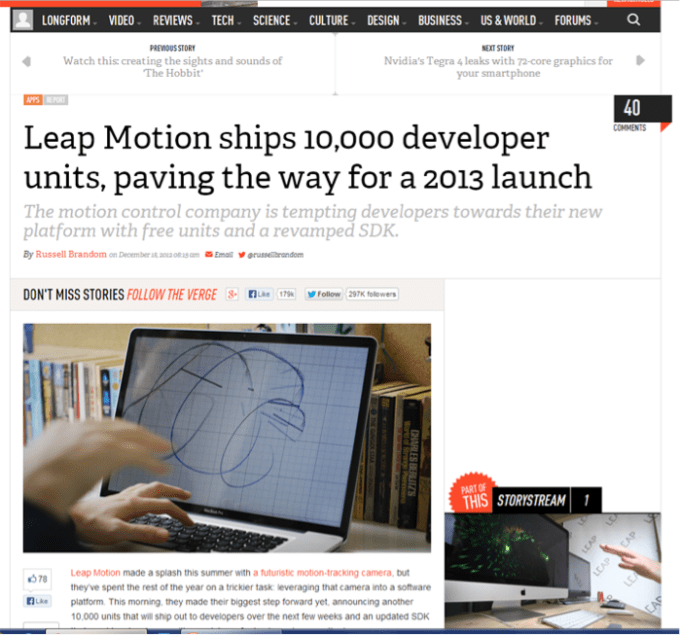
And photo of the letter from Michael Buckwald (I don’t know if it can be published)
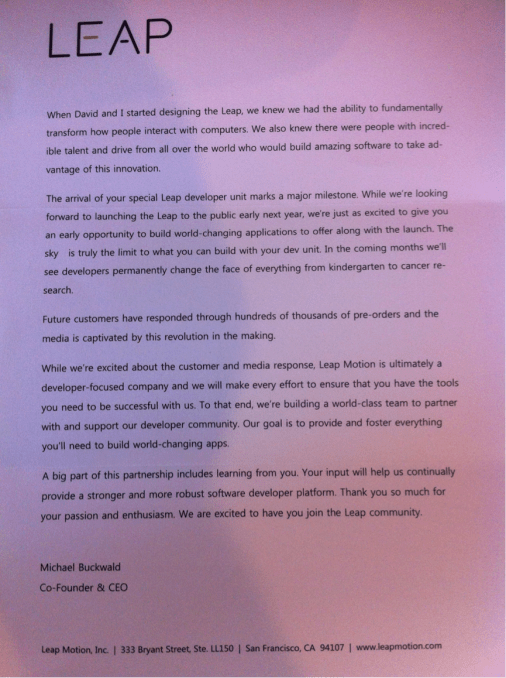
I presented it to the team and to show them it’s capabilities I made a quick gesture “mouse” (I uploaded the video of it here https://www.youtube.com/watch?v=4FfUHcX4tNg).
We had a unforgettable brainstorming session and one of the brunch members had this funny idea, to rotate the spit by using one finger. He, even, thought it’s easy.
Since they were all enthusiastic about it I started designing the project and we started developing it. Don’t forget it’s Business Administration School and they have chosen “Management Information Systems” curriculum. So this was a problem solving method to make them learn things.
On every step all together we were trying to solve the problem presented. Of course I was guiding them to a viable solution.
We first had a requirements analysis, then rapid prototyping and re design, budget estimation, business plan etc etc.
Here is the prototype of the application interface
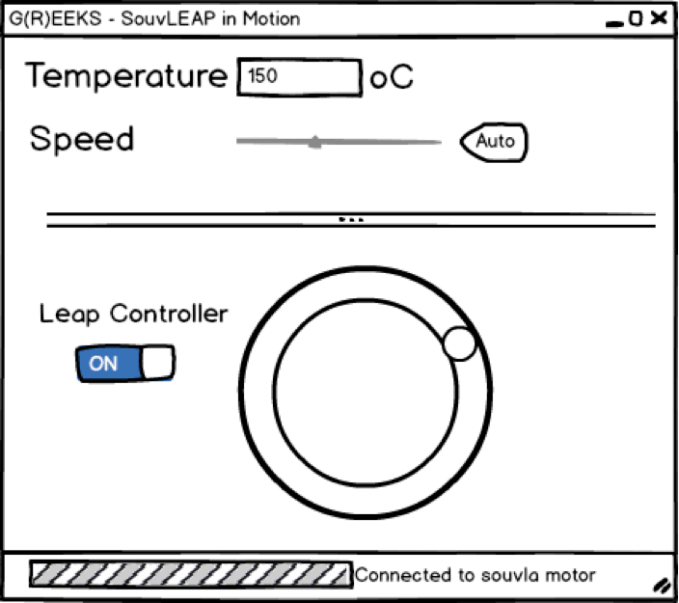
As one can figure out there were many questions to be answered, from HCI to electronics, marketing plan, video scenario, etc etc.
We ended up with the below design:
LEAP motion sensor provides the position and direction of fingers to the application which calculates the rotation frequency of the finger.
The application sends this frequency to arduino UNO R3 via WiFi.
Arduino sets the frequency of the motor using PWM via a MOSFET and sends back coal temperature (we have a k-thermocouple installed) and CPU temperature to the application.
Here is a screenshot of the application and an architecture schema
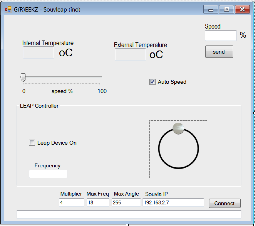
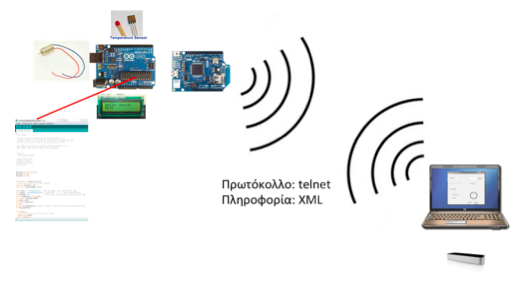
As seen in the screenshot there is no need to rotate the finger all the time. There are 3 modes of operation
- Send the frequency calculated once and re send when you want to change it
- Manual operation by moving the slider
- Automatic operation where the rotation frequency is proportional to the coal temperature in a range of 50 to 250 oC .
To promote the project we made this video https://www.youtube.com/watch?v=4d4mcIopE-k which was intended to be sent to the media during Pasha, for better impact of course.
Here are some more photos:
Setting up the system
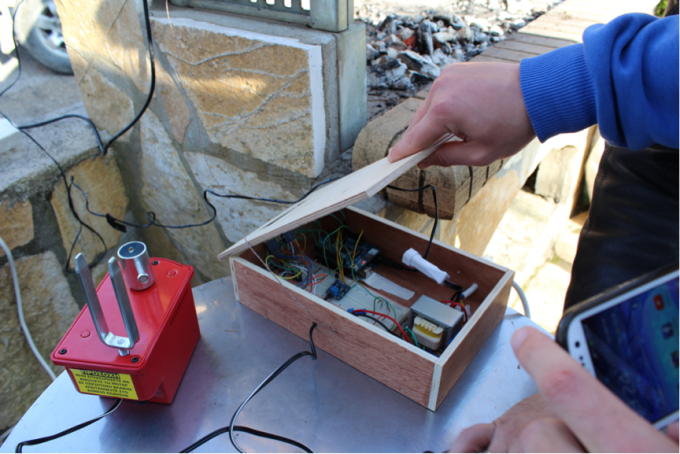
Development phase:
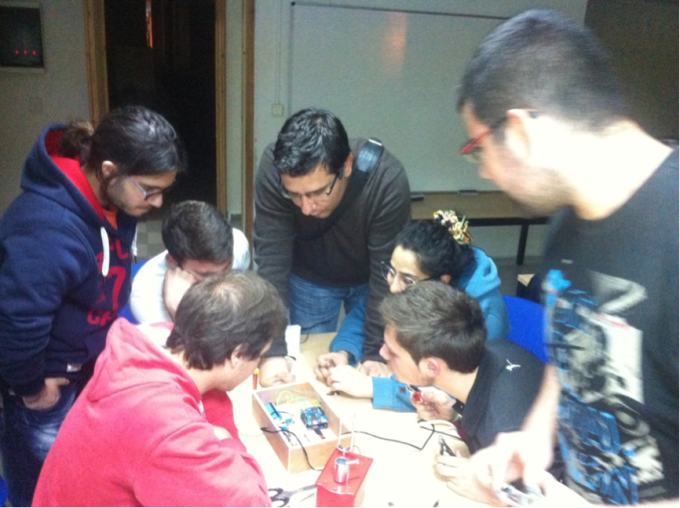
Early development phase
